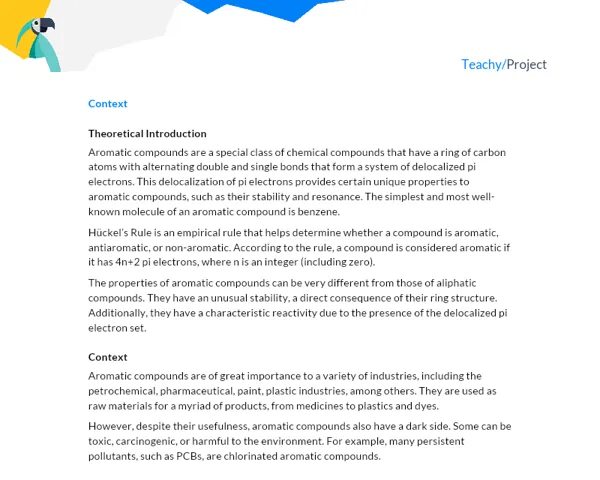Contextualization
Introduction
Chemistry, as a science, studies the composition, structure, properties of matter, the changes it undergoes during chemical reactions, and the energy absorbed or released in these processes. A fundamental concept in chemistry is the mole, a unit of measurement for the amount of substance.
The mole is a unit chosen by chemists to count atoms, molecules, ions, and other bodies whose sizes are usually expressed with many zeros. As a technical definition, a mole is the number of atoms in exactly 12 grams of carbon-12.
Now, when we talk about the relationship between mole and volume in a gas at Standard Temperature and Pressure (STP), which corresponds to 0 degrees Celsius and 1 atm of pressure, each mole of any gas occupies 22.4 liters of volume. This is a powerful principle that allows us to make predictions about the behavior of gases and is key to understanding many chemical reactions.
Contextualization
Understanding the relationship between mole, volume, and gas at STP is essential for various practical applications. It is directly linked to the chemical industry, such as in the production of plastics, paints, detergents, medicines, fertilizers, among others. It also has applications in energy production, such as in fuel combustion.
Understanding how gas volumes react at STP can allow us to make predictions about how chemical reactions will occur, which is vital for the industry. This is what enables us to create industrial processes that efficiently and safely convert raw materials into useful products.
To delve deeper into the subject, we suggest the following resources:
- "Stoichiometric calculation and gas laws" - Escola Brasil.
- "Ideal Gases" - UOL Educação.
- "How to calculate the mole" - Youtube video by professor Agamenon Roberto.
Practical Activity
Activity Title: "Investigating the Mol x Volume Relationship in Gas at CNTP: A Practical Approach"
Activity Objective
The objective of this work is to offer students the opportunity to investigate the relationship between mole and gas volume at Standard Temperature and Pressure (STP), conducting a practical experiment and discussing its applications in industry and everyday life.
Detailed Project Description
In this activity, each group of 3 to 5 students will conduct an experiment to verify the theory of the Mol x Volume relationship in gas at STP. Balloons, baking soda, and vinegar will be used to generate the gas. We will measure the volume of gas produced and compare it with theoretical predictions. We will also measure the amount of substances used to relate to the amount of moles.
Required Materials
- Baking soda (NaHCO3)
- Vinegar
- Balloons
- Paper funnel
- Liquid containers
- Precision scale
- Measuring tape
Activity Steps
- Weigh the amount of baking soda to be used with the precision scale. Record the value.
- Use the paper funnel to place the baking soda inside the balloon.
- Measure with precision the amount of vinegar to be used. Record the value.
- Place the vinegar in the container. Then, place the balloon on the mouth of the container, so that the baking soda does not fall into the vinegar yet.
- Lift the balloon so that the baking soda falls into the container with vinegar. This will initiate the chemical reaction, producing gas that will inflate the balloon.
- When the reaction is complete, use the measuring tape to measure the volume of the gas produced (measure the circumference of the balloon and use the formula for the volume of a sphere).
- Compare the results obtained with the theoretical predictions using the relationship between mole and volume at STP.
Project Deliverables
After completing the practice, groups should produce a written file with the following topics:
- Introduction: Reviewing the theory of the relationship between mole, volume, and gas at STP, its relevance and application in the real world, as well as the objective of this project.
- Development: Detailed discussion of the experiment conducted, explaining the methodology used, the calculations performed, and the results obtained.
- Conclusions: Analysis of the results, comparison with theoretical predictions, what was learned, how this applies to real situations, etc.
- Bibliography: List of sources consulted for the project.
Groups have one week to complete the work, and final reports should be submitted in digital format. When writing the report, students should strive to present their ideas clearly and concisely, using correct scientific language.


